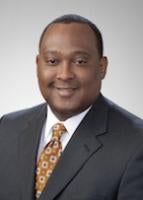On June 19, 2014, in Alice Corp. v. CLS Bank International, the United States Supreme Court unanimously affirmed the ineligibility of the patent claims at issue—directed to the abstract idea of "intermediated settlement"—and held that implementing an "intermediated settlement" of financial accounts using a generic computer did not transform that idea into patent-eligible subject matter.[1] In reaching its decision, however, the Court seemed to imply that it might reach a different conclusion about claims that either "purport to improve the functioning of the computer itself" or "effect an improvement in any other technology or technical field.[2] The Court has drawn a new line for patent eligibility that has the potential to affect the viability of patents and patent applications directed to software, business methods, and various computer-related technologies. Patent holders and applicants should evaluate their existing patent portfolios—particularly those including patents and applications related to software—to determine if, how, and to what extent their method, system, and computer medium claims satisfy these "Alice" guidelines.
Section 101 of the Patent Act provides that "[w]hoever invents or discovers any new and useful process, machine, manufacture, or composition of matter, or any new and useful improvement thereof, may obtain a patent therefor...."[3] Laws of nature, natural phenomena, and abstract ideas, however, have been exceptions to § 101 and are ineligible for patent protection. Here, the four related patents at issue, assigned to Alice Corporation, include method, computer system, and computer-readable medium claims directed to "a computer-implemented scheme for mitigating 'settlement risk' (i.e., the risk that only one party to a financial transaction will pay what it owes) by using a third-party intermediary."[4] The subject lawsuit began in 2007, when the accused infringers, CLS Bank International and CLS Services Ltd., filed a declaratory judgment action in the District of Columbia. After receiving summary judgment motions from both sides, the district court found that the claims of all four patents were directed to ineligible subject matter. Although a panel of the Federal Circuit initially reversed, the Federal Circuit, sitting en banc, ultimately affirmed the district court's judgment.[5]
The Court affirmed the Federal Circuit's judgment using the two-step approach outlined in Mayo Collaborative Services v. Prometheus Laboratories, Inc., by determining first whether the claims are directed to an identifiable abstract idea and, if so, second, whether the abstract idea is transformed in some manner. The Court determined that the patent claim limitations individually only recite purely conventional functions performed by a generic computer and, further, that in combination these claim elements do not add anything that is not already present when the limitations are considered individually.[6] Echoing its Bilski v. Kapposdecision in the first step of its analysis, the Court analogized an intermediated settlement to the process of risk hedging, which it deemed unpatentable in Bilski, and noted that intermediated settlement is "a fundamental economic practice" and "a building block of the modern economy."[7] Further, it noted that patent-ineligible abstract ideas are not limited to merely "preexisting, fundamental truths" but also include "method[s] of organizing human activity."[8]
The Court's second step of its analysis emphasized that "transformation requires more than simply stating the abstract idea while adding the words 'apply it.'"[9] Moreover, it noted that the mere presence of a generic computer—although a tangible machine—is insufficient for a transformation. The Court then gave several illustrative examples from its past decisions. For example, it reiterated that neither implementation of a mathematical principle on a computer nor limiting the use of an abstract idea "to a particular technological environment" is sufficient for a transformation.[10] Conversely, patent-eligible subject matter exists in using a well-known mathematical equation to solve a technological challenge that had not yet been solved within the industry because the claims "improved an existing technological process, not because they were implemented on a computer."[11] Applying those principles here, the Court concluded that all of the claims, even the system claims, are directed to unpatentable subject matter.[12]
At the same time, however, the Court cautioned that "an invention is not rendered ineligible for patent simply because it involves an abstract concept.[13] It explained that, "[a]t some level, all inventions ... embody, use, reflect, rest upon, or apply laws of nature, natural phenomena, or abstract ideas."[14] According to the Court, the key distinction is between "patents that claim the building blocks of human ingenuity and those that integrate the building blocks into something more, thereby transforming them into a patent-eligible invention."[15]
The Court's Alice decision is arguably the most significant case on the patentability of abstract ideas since the Bilski decision in 2010. It likely will cause the United States Patent and Trademark Office to change its examiner guidelines for making patent-eligible subject matter determinations. This decision has the potential to send ripples throughout the software and financial industries as patent holders recalibrate their patent protection approach to software, business methods, and various computer-related technologies.
[1]Alice Corp. v. CLS Bank Int'l, No. 13–298, slip op. at 1 (U.S. June 19, 2014).
[2]Id. at 15.
[3]35 U.S.C. § 101.
[4]Id. at 1 & n.2, 3.
[5]Id. at 3–4.
[6]Id. at 7, 15 (citing Mayo Collaborative Servs. v. Prometheus Labs., Inc., 132 S. Ct. 1289 (2012)).
[7]Id. at 1, 9 (citing Bilski v. Kappos, 561 U.S. 593 (2010)).
[8]Id. at 10
[9]Id. at 11 (internal quotations omitted).
[10]Id. at 12 (citing Gottschalk v. Benson, 409 U.S. 63 (1972) and Parker v. Flook, 437 U.S. 584 (1978)).
[11]Id. at 13 (citing Diamond v. Diehr, 450 U.S. 175 (1981)).
[12]Id. at 16-17
[13]Id. at 6
[14]Id. at (quoting Mayo, 132 S. Ct. at 1303 (internal citations and quotations omitted)
[15]Id.




 />i
/>i

